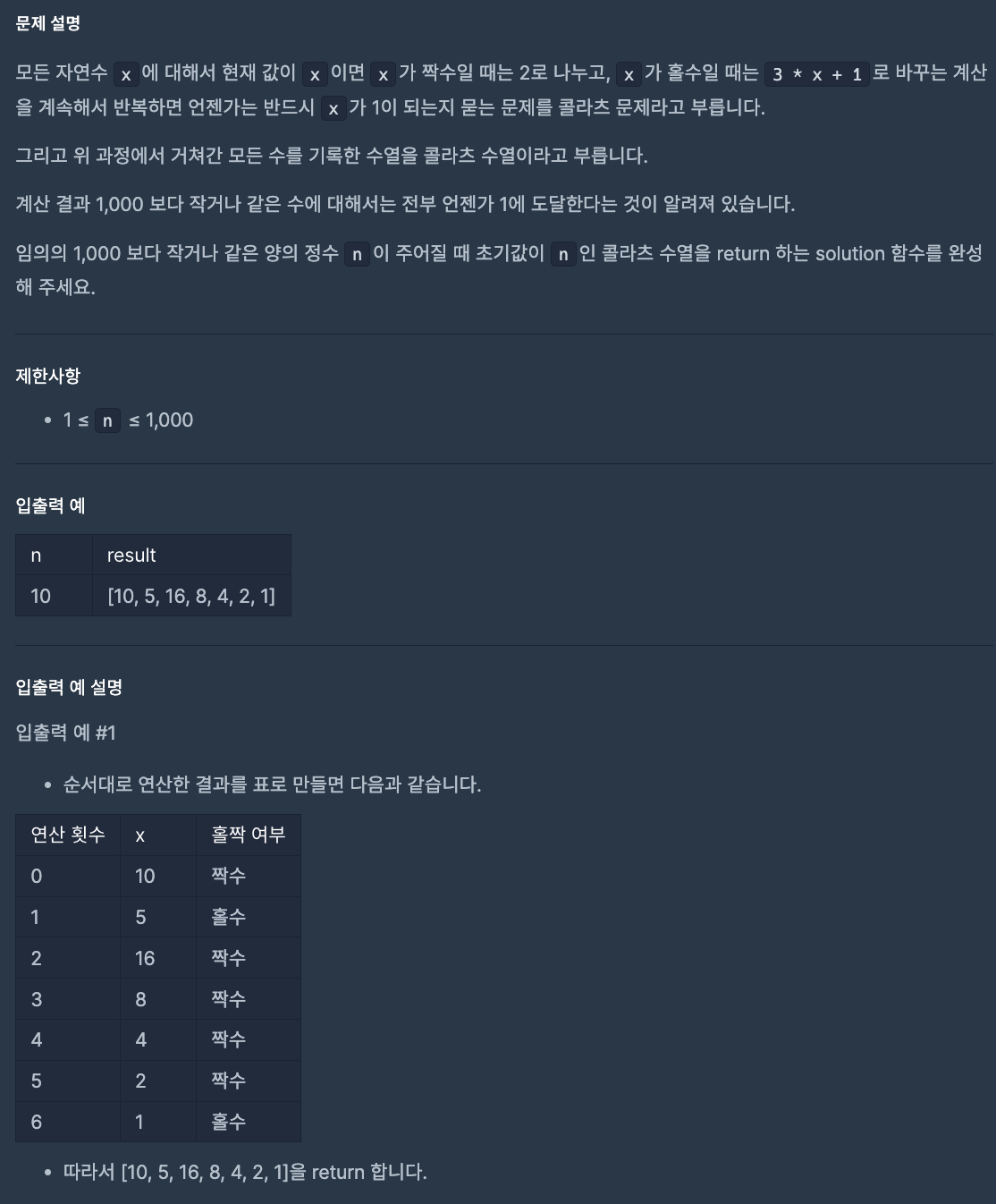콜라츠 수열 만들기
https://school.programmers.co.kr/learn/courses/30/lessons/181919
- 문제 풀이
1
2
3
4
5
6
7
8
9
10
11
12
13
14
15
16
17
18
19
20
21
22
23
24
25
26
import java.util.ArrayList;
import java.util.List;
public class Solution {
public List<Integer> solution(int n) {
List<Integer> result = new ArrayList<>();
result.add(n); // 초기값 추가
while (n != 1) {
if (n % 2 == 0) { // 짝수인 경우
n /= 2;
} else { // 홀수인 경우
n = 3 * n + 1;
}
result.add(n); // 변환된 값 추가
}
return result;
}
public static void main(String[] args) {
Solution sol = new Solution();
List<Integer> result = sol.solution(10);
System.out.println(result); // 출력: [10, 5, 16, 8, 4, 2, 1]
}
}
1
2
3
4
5
6
7
8
9
10
11
12
13
14
15
16
17
18
19
20
21
22
23
24
25
26
27
28
29
30
31
public class Solution {
public int[] solution(int n) {
// 콜라츠 수열의 최대 길이는 1000을 넘지 않으므로 크기가 1000인 배열을 생성한다.
int[] result = new int[1000];
int index = 0;
result[index++] = n; // 초기값 추가
while (n != 1) {
if (n % 2 == 0) { // 짝수인 경우
n /= 2;
} else { // 홀수인 경우
n = 3 * n + 1;
}
result[index++] = n; // 변환된 값 추가
}
// 결과 배열의 크기를 콜라츠 수열의 실제 길이에 맞게 조정한다.
int[] finalResult = new int[index];
System.arraycopy(result, 0, finalResult, 0, index);
return finalResult;
}
public static void main(String[] args) {
Solution sol = new Solution();
int[] result = sol.solution(10);
for (int num : result) {
System.out.print(num + " "); // 출력: 10 5 16 8 4 2 1
}
System.out.println();
}
}
1
2
3
4
5
6
7
8
9
10
11
12
13
14
15
16
17
18
19
20
import java.util.ArrayList;
import java.util.List;
class Solution {
public List<Integer> solution(int n) {
List<Integer> collatzSequence = new ArrayList<>();
collatzSequence.add(n);
while (n != 1) { // n으로부터 시작해서 콜라츠 추측에 따라 계산하여 수열을 만들어낸다.
if (n % 2 == 0) {
n /= 2;
} else {
n = 3 * n + 1;
}
collatzSequence.add(n);
}
return collatzSequence; // 결과는 List<Integer> 형태로 반환된다.
}
}
이 기사는 저작권자의 CC BY 4.0 라이센스를 따릅니다.
